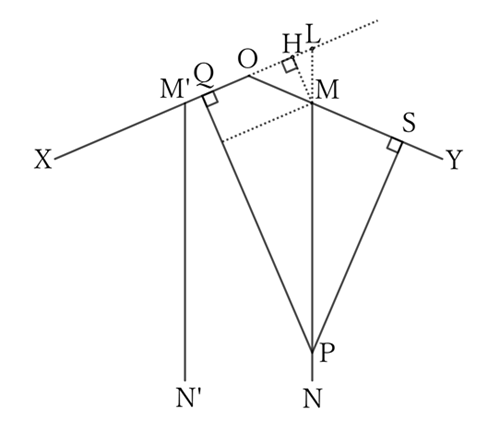There are two half lines $OX$ and $OY$ starting at $O$.
Let a point $P$ be within $∠XOY$ and the feet of perpendicular lines drawn from it to $OX$ and $OY$ be $Q$ and $S$, respectively.
Then, if the difference between $PS$ and $PQ$ is a constant $m$, then the point $P$ is always on a fixed straight line.
$\downarrow$ $\downarrow$ $\downarrow$ $\downarrow$ $\downarrow$
$$ $$Solution

Draw a line through $P$ so that the angles which the line makes with the extension of $XO$ and $YO$ are equal.
Let the points where the line intersects with the extension of $XO$ and $YO$ be $L$ and $M$, respectively.
If a perpendicular line $MH$ is drawn from $M$ to $OL$, then from the problem $0152$,
$$PQ-PS=MH.$$
However, since $PQ-PS=m$ (a constant) by assumption, $MH=m$ is constant.
Therefore, the position of $M$ is determined by drawing a parallel line at a distance of $m$ from $OX$.
Thus, the isosceles triangle $OML$ is a definite triangle, and $P$ is on the half line $MN$, which is an extension of the definite line segment $ML$.
However, note that $P$ may lie on the half line $M’ N’$ that is symmetric with $MN$ with respect to the bisector of $∠XOY$.
$ $
Reference Teiichiro Sasabe (1976) The Encyclopedia of Geometry (2nd edition), Seikyo-Shinsha, p.39.